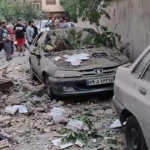What Is a Mock Drill?
A mock drill replicates real-life emergencies, allowing participants to practice their roles, refine response strategies, and identify weaknesses in plans or infrastructure. These drills are vital for:
Contents
- Reducing panic and chaos during real emergencies
- Familiarizing people with evacuation routes, shelters, and emergency procedures
- Testing communication systems and coordination among agencies
Types of Mock Drills
- Civil Defence/War Drills: Simulate air raids, missile strikes, or other hostile attacks. Involve blackout protocols, air raid sirens, sheltering, and evacuation.
- Fire Drills: Practice safe evacuation and firefighting procedures in case of fire.
- Earthquake Drills: Teach “drop, cover, and hold on” techniques and safe evacuation.
- Chemical/Hazmat Drills: Prepare for hazardous material leaks or spills.
- Medical Emergency Drills: Train in first aid and rapid medical response.
Historical Context: India’s Mock Drills
The 1971 Nationwide Civil Defence Drill
- Backdrop: In the lead-up to the 1971 Indo-Pakistani War, India conducted its most extensive civil defence mobilization, involving millions of civilians, students, and local administrations.
- Blackout Drills: Cities and towns practiced switching off all lights, covering windows, and using blackout curtains to avoid detection by enemy aircraft.
- Camouflage: Iconic landmarks like the Taj Mahal were disguised with green cloth and foliage to blend into the environment, while factories and infrastructure were covered with nets and tarps.
- Evacuation and Bunker Training: Civilians rehearsed moving to bunkers and trenches, and children practiced sheltering with school bags.
- Public Participation: NCC cadets, Home Guards, and volunteers played key roles, embedding emergency response into daily life.
Legacy and Impact
- The 1971 drills fostered a culture of preparedness and coordination between civilians and authorities, setting a benchmark for future exercises.
- Since then, large-scale civil defence drills have been rare, making the 2025 exercise particularly significant.
Modern Mock Drills: May 7, 2025
- Why Now? The Ministry of Home Affairs ordered a nationwide civil defence mock drill after the Pahalgam terror attack and rising India-Pakistan tensions.
- Scope: Over 244 civil defence districts will participate, with activities including air raid sirens, blackout simulations, evacuation rehearsals, and bunker maintenance.
- Participants: Civil Defence wardens, Home Guards, NCC/NSS volunteers, students, and local police will be involved.
- Objectives: Test readiness, update evacuation plans, verify communication systems, and ensure public awareness without causing panic.
Importance and Benefits
- Preparedness: Regular drills ensure everyone knows what to do, reducing confusion and saving lives.
- Gap Identification: Drills reveal weaknesses in emergency plans, allowing for improvements.
- Coordination: Enhance teamwork among civilians, emergency responders, and authorities.
- Compliance: Many sectors require mock drills to meet safety regulations.
Key Facts
- The 2025 civil defence mock drill is the first of its scale since 1971.
- Blackout drills and camouflage were crucial in protecting Indian cities and monuments during wartime.
- Mock drills are essential in workplaces, schools, and public spaces for all types of emergencies, not just war.
In summary: Mock drills are critical for building a resilient society, capable of facing both natural and man-made disasters. Their history in India underscores the importance of civilian participation and coordinated action.















